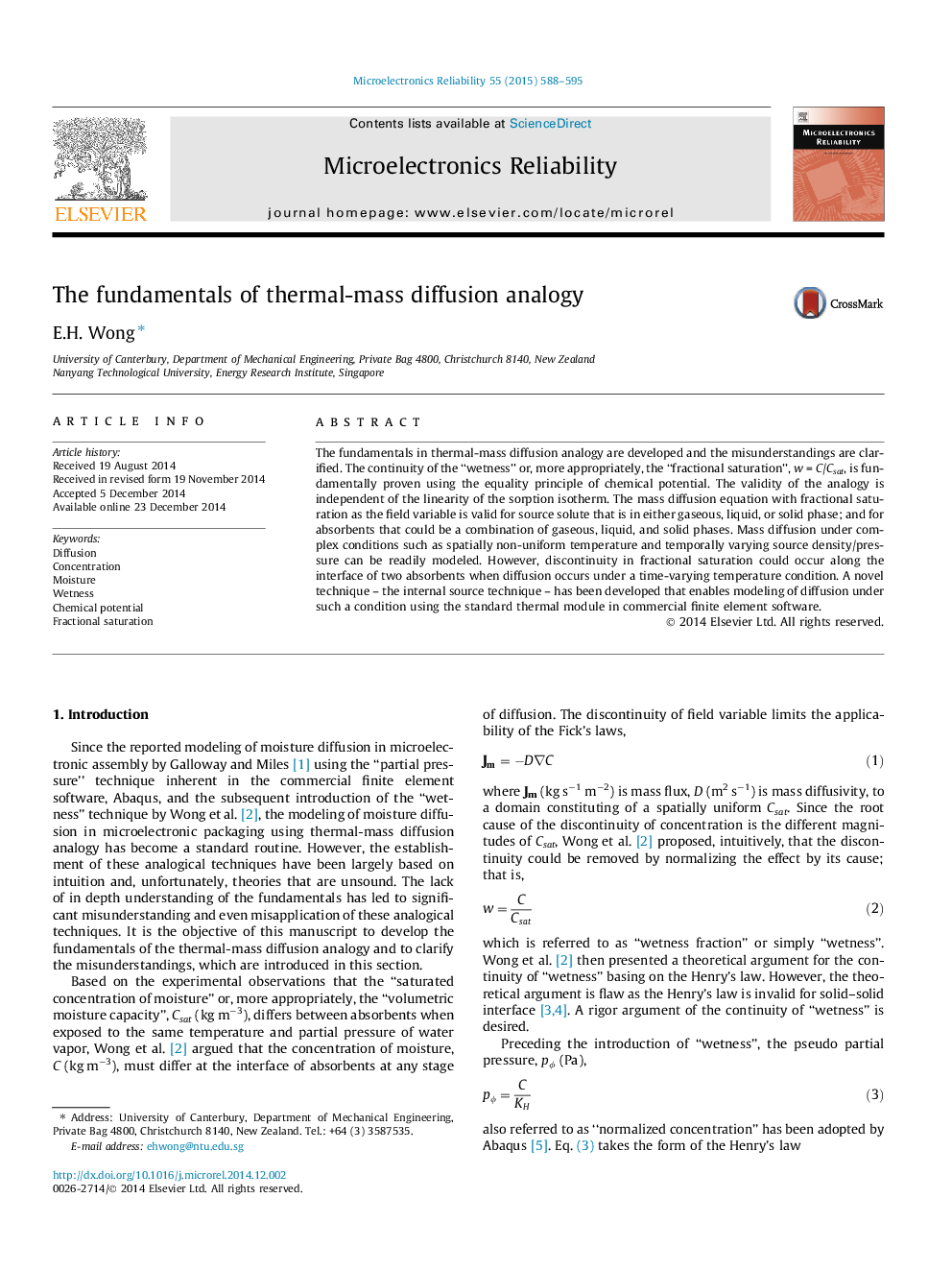| کد مقاله | کد نشریه | سال انتشار | مقاله انگلیسی | نسخه تمام متن |
|---|---|---|---|---|
| 546748 | 1450546 | 2015 | 8 صفحه PDF | دانلود رایگان |
• Correspondence between temperature and fractional saturation (w=C/Csat)(w=C/Csat) is fundamentally established.
• The validity of the correspondence is independent of the linearity of the sorption isotherm.
• Applicable to solute of any phase and absorbents that are a combination of gas, liquid, and solid.
• Detailed explanations provided for diffusion under complex environments.
• E.g. temporally varying and spatially non-uniform temperature and source.
The fundamentals in thermal-mass diffusion analogy are developed and the misunderstandings are clarified. The continuity of the “wetness” or, more appropriately, the “fractional saturation”, w = C/Csat, is fundamentally proven using the equality principle of chemical potential. The validity of the analogy is independent of the linearity of the sorption isotherm. The mass diffusion equation with fractional saturation as the field variable is valid for source solute that is in either gaseous, liquid, or solid phase; and for absorbents that could be a combination of gaseous, liquid, and solid phases. Mass diffusion under complex conditions such as spatially non-uniform temperature and temporally varying source density/pressure can be readily modeled. However, discontinuity in fractional saturation could occur along the interface of two absorbents when diffusion occurs under a time-varying temperature condition. A novel technique – the internal source technique – has been developed that enables modeling of diffusion under such a condition using the standard thermal module in commercial finite element software.
Journal: Microelectronics Reliability - Volume 55, Issues 3–4, February–March 2015, Pages 588–595
